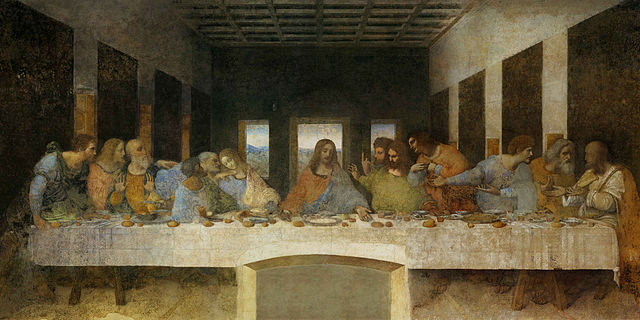Revised: 18-Dec-2008
Was it over when the Germans bombed Pearl Harbor?!
Animal House
Many readers from my generation probably remember the hilarious riposte by Bluto, a character in the movie Animal House: “Was it over when the Germans bombed Pearl Harbor?!” One could not ask for a funnier example of a historical howler than that, and John Belushi’s performance made it even more hilarious. But historical howlers are not always funny. Consider, for example, the factual errors strewn throughout Dan Brown’s runaway bestseller, The Da Vinci Code. The howlers and other factual errors in the middle chapters of that book are almost too numerous to count (on p. 234, there are sixteen errors in the space of just three small paragraphs!), and they are so absurd that debunking the book’s virtual history has been compared to shooting fish in a barrel. Unfortunately, probably only a fraction of that novel’s readers are any the wiser, and that is why these howlers are ultimately not funny. They will be even less funny when the movie comes out.[8]
As I use the term, I do not refer to every factual error as a “howler.” When one of Brown’s characters (on p. 234) says that the Dead Sea Scrolls were discovered in the 1950’s, or refers to the writings discovered at Nag Hammadi in 1945 as “scrolls” (instead of codices), or refers to what a word found in those writings means in “Aramaic” (instead of Coptic), historians might have more than enough reason to wince, but we probably shouldn’t classify the error as a “howler.” I would also add that those sorts of mistakes do not contribute materially to Brown’s fallacious, revisionist history of Jesus and the early church (which might allow the historian to find some humor at those points). Some of these errors are no worse than, say, a green or yellow tunic in a 1950’s movie based on a Bible story. But when Brown’s character asserts that Gnostic gospels were found in the Dead Sea Scrolls (as he does on p. 234, in the same paragraph as the above claims), or that the divinity of Christ did not become a Christian tenet until the time of Constantine, we are clearly in the realm of the howler. Any writer who makes errors of that magnitude cannot be said to have done his or her research (their claims notwithstanding).
Premium Members and Friends of JP must be signed in to view this content.
If you are not a Premium Member or Friend, please consider registering. Prices start at $5/month if paid annually, with other options for monthly and quarterly and more: Sign Up For Premium
- [1] Of those which I have read, I recommend the one by Bart D. Ehrman (Truth and Fiction in The Da Vinci Code: A Historian Reveals What We Really Know About Jesus, Mary Magdalene, and Constantine [Oxford: Oxford University Press, 2004]) for matters relating to early Christianity [viz. up to the time of Constantine], and the one by Carl E. Olson and Sandra Miesel (The Da Vinci Hoax: Exposing the Errors in The Da Vinci Code [San Francisco: Ignatius, 2004]) for post-Constantinian matters. I read the novel, and the above-mentioned books, in preparation for team-teaching an eight-part church course on debunking The Da Vinci Code. ↩
- [2] See John Dart, The Laughing Savior: The Discovery and Significance of the Nag Hammadi Gnostic Library (New York: Harper & Row, 1976). ↩
- [3] Frederik Wisse, "Flee Femininity: Antifemininity in Gnostic Texts and the Question of Social Milieu," in Karen L. King (ed.), Images of the Feminine in Gnosticism (Studies in Antiquity & Christianity; Philadelphia: Fortress, 1988) 297-307. ↩
- [4] This sentiment was written into a song that was a hit for George Harrison in the early 1970's. The words could have been the prayer of a Gnostic: "Give me light. Give me life. Keep me free from birth." ↩
- [5] On Mary Magdalene as rival of the other apostles, see Elaine Pagels, The Gnostic Gospels (New York: Random House, 1979) 64-65. ↩
- [6] "No Church Conspiracy against Mary Magdalene," National Catholic Reporter, Feb 9, 2001 (quoted in Olson and Miesel, The Da Vinci Hoax, p. 87). ↩
- [7] See Eldon Jay Epp, Junia: The First Woman Apostle (Minneapolis: Fortress, 2005). ↩
- [8] To the credit of Sony Pictures, they have decided to allow Christian responses to The Da Vinci Code to be posted on their website. ↩




